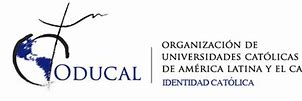Structural fire loads : theory and principles / Leo Razdolsky
Idioma: Inglés Editor: New York : McGraw-Hill, 2012Descripción: xv, 447 p. : ill. ; 24 cmTipo de contenido:- texto
- no mediado
- volumen
- 9780071789738 (hardback)
- 624.171 23
| Tipo de ítem | Biblioteca actual | Signatura topográfica | Estado | Fecha de vencimiento | Código de barras | Reserva de ítems | |
|---|---|---|---|---|---|---|---|
 E-Book
E-Book
|
Sede Quito | 624.171 (Navegar estantería(Abre debajo)) | Disponible | Ebook00507 |
Includes bibliographical references and index.
Machine generated contents note: Ch. 1. Introduction -- Ch. 2. Overview of Current Practice -- Ch. 3. Structural Fire Load and Computer Models -- Ch. 4. Differential Equations and Assumptions -- Ch. 5. Simplifications of Differential Equations -- Ch. 6. fire Load and Severity of Fires -- Ch. 7. Structural Analysis and Design -- References -- Appendix A: National Institute of Standards and Technology (NIST) Best Practices -- Appendix B: NIST Surveys for Fire Loads.
"A complete guide to designing structures to better withstand the effects of fires of various growthsStructural Fire Loads: Theory and Principles combines the disciplines of structural engineering and fire protection engineering by offering a screening tool that can be used by engineers to perform preliminary assessments of fire as a load and its impact on structures. The book covers slow, medium, fast, and ultra-fast fire growth and fires in combination with seismic loads.Neither the 2009 IBC nor ASCE-7 considers fire a structural design load in buildings when prescriptive resistive design methods are used. However, the ICC Performance Code for Building and Facilities requires that the structural integrity of a building be evaluated and maintained to limit fire impact. This practical guide bridges the gap between structural engineering and fire protection engineering when fire is considered a design load.Structural Fire Loads features: Practical examples for fire protection and structural engineering design presented in a simple, step-by-step computational format Details on slow, medium, fast, and ultra-fast fire growth A Solutions Manual for equations presented in chapters 6 and 7 NIST Best Practices and Surveys for Fire Loads A single source that outlines how fire impacts structures Authoritative coverage: Overview of Current Practice; Structural Fire Load and Computer Models; Differential Equations and Assumptions; Simplifications of Differential Equations; Fire Load and Severity of Fires; Structural Analysis and Design"--
"This practical guide provides a single source for evaluating how fire impacts structures and how to design structures to better withstand the effects of fires of various growths"--
No hay comentarios en este titulo.









